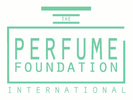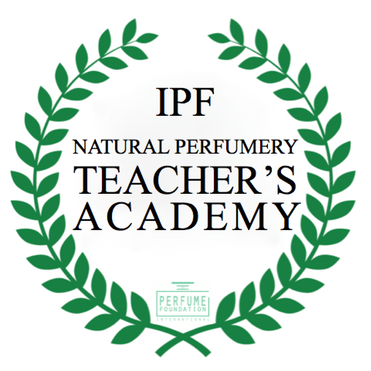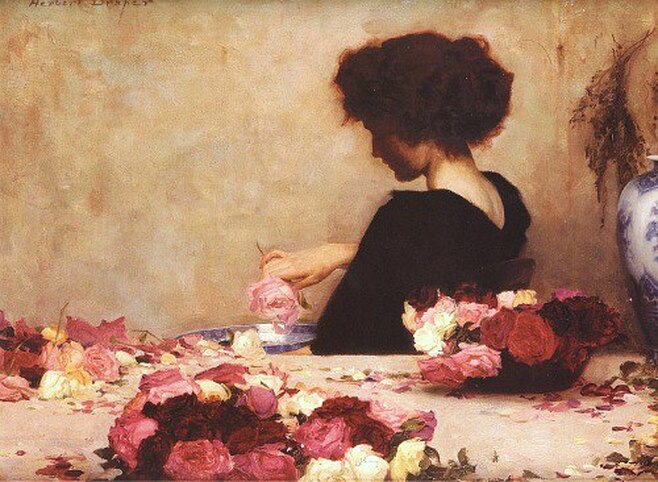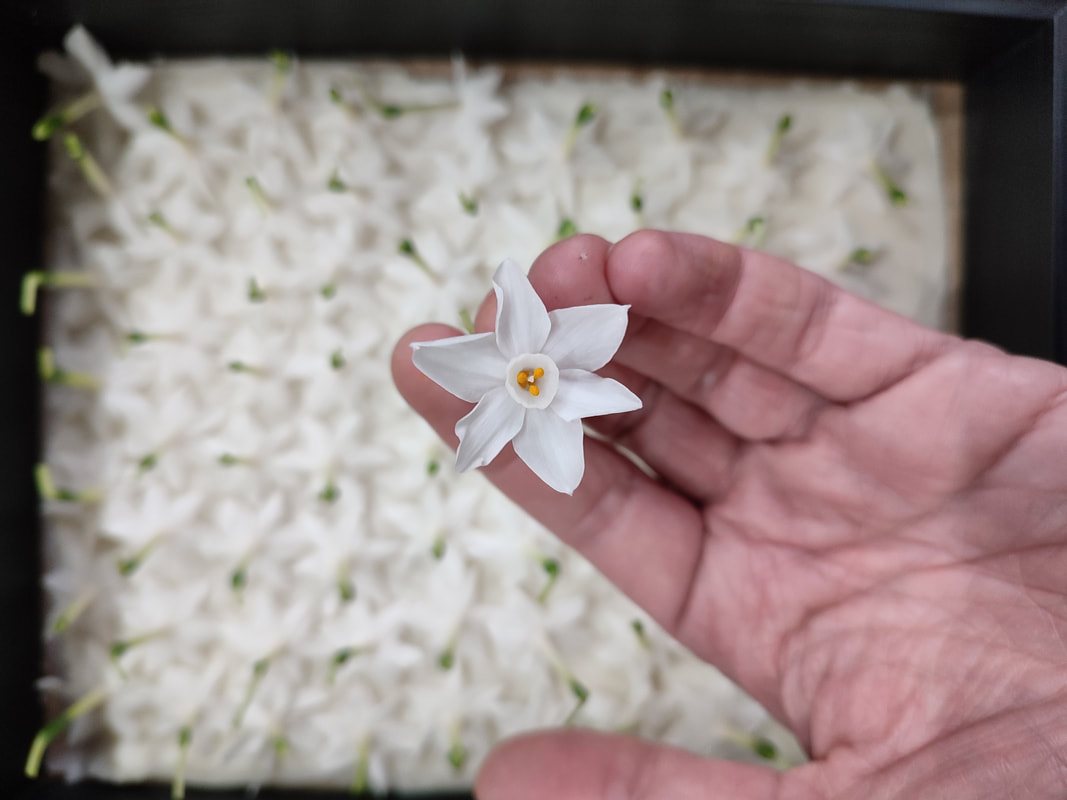|
The Turbulent Journey of French Perfumery Through History By Creezy Courtoy World History Perfumery Expert and Teacher Throughout history, humanity's quest to bridge the divine and the earthly realms has often been mediated through the aromatic allure of perfumes and spices. However, this journey has not been without its dark epochs, notably during periods marked by the overwhelming influence of the Catholic Church, such as the Crusades, the medieval era, and the Inquisition. These were times when the Church's supremacy overshadowed even that of monarchs, intertwining religious power with the governance of states, culminating in France's separation of Church and State only in 1905. Such dominance led to the suppression of perfumes for daily use, associating them with witchcraft or frivolous, forbidden indulgences. Despite these challenges, the evolution of perfumery, much like science, experienced moments of pause rather than a complete halt. Innovative and pragmatic individuals emerged, defying the restrictions to maintain the therapeutic application of perfumes, utilizing flowers, plants, essential oils, aromatic vinegars, and "miraculous waters." Fortunately, these periods of constraint were interspersed with eras of abundance under monarchies that valued luxury and opulence over the Church's austerity. The dominion of the Church also impeded the broader progression of the sciences, holding the Bible as the singular path to salvation and often placing it in conflict with reason. Yet within the confines of monasteries, a different story unfolded. Monks became the custodians of ancient knowledge, cultivating medicinal plants and translating the works of Galen, Aristotle, Dioscorides, and Pliny. They preserved the beauty secrets and remedies of Greek and Roman antiquity, enriching them with the synthesis of translated Arabic manuscripts. Some of these recipes bordered on the magical, using ingredients and methods dictated by the movements of celestial bodies. The School of Salerno, a beacon of medical education in the 12th century, stood out for its quality of teaching and its secular approach, contrasting with the religious orthodoxy of most Western universities of the time. It honored both Greek and Arabic medical traditions, emphasizing the balance of the body's four humors as the foundation of health. The introduction of distilled alcohol for its revitalizing properties by figures like Raymond Lulle and Arnaud de Villeneuve marked a significant advancement in pharmacy, incorporating distillation into the preparation of remedies and cosmetics.
As perfumers ascended the social ladder, the first universities in Paris, Montpellier, and Padua were established, laying the groundwork for a more structured and secular education system. However, the contrast between the ideals of Salerno and the grim realities of the "Hotels-Dieu" in the West, which were far from the medical sophistication of Arabian hospitals, highlighted the stark differences in healthcare and hygiene practices between the cultures. This journey through the history of perfumery reveals not only the enduring human fascination with fragrance but also the complex interplay between religion, science, medicine and art. It underscores the resilience of perfumery as an art form, persistently evolving and flourishing despite the shadows cast by periods of suppression and ignorance.
0 Comments
By Andrej Babicky, Certified Natural Perfumer and Raw Material Natural Extraction Methods Expert Capturing the Ephemeral In the realm of perfume crafting, there's an art to capturing the essence of flowers. Among various extraction methods, from distillation to maceration, one stands out for its enchanting approach – enfleurage. This method, despite being laborious, possesses a magical ability to imprint the olfactory fingerprint of a flower, making it a personal favorite. The enfleurage process is both a journey and an experiment, much like the anticipation of spring when fragrant flowers are ready to bloom. Imagine stepping into your garden, balcony, or even just a sunny windowsill, armed with the intention to entwine the ephemeral soul of a flower into a fragrant masterpiece. For me, this is more than just a technique; it's a dance with nature. Enfleurage, contrary to its demanding nature, offers a playground for experimentation. Co-enfleuraging different flowers became my joyful pursuit, creating complex pomades that danced with the richness of jasmine, gardenias, plumeria, Stephanotis, Cestrum, banana leaves, roses, and even tomato leaves. This became more than an experiment; it evolved into a fragrant game, a symphony of scents. Over time, I expanded my palette, incorporating different raw materials into the pomade. Unrefined coconut oil, with its tropical aroma, became a base for enfleurage experiments, mingling with gardenias, plumeria flowers, bourbon vanilla pods, finely ground resins and iris powder. The result? A tapestry of new scents and the recreation of complex, unique bouquets. The manufacturing process remains true to tradition. Glass or ceramic containers replace the classic chassis, vegetable butters and oils stand as the primary medium, and the delicate dance of changing flowers persists. Some of my enfleurages remain soaked in alcohol for months, allowing me to study raw materials practically, even if they never make it into a final composition. In the historical context, enfleurage played a crucial role in the fragrance industry. Refined in Grasse, France, in the mid-1700s, it became an industrial center for essence extraction. Today, enfleurage is a mainly historical method, replaced by more modern techniques. However, with the resurgence of interest in natural perfumery, some perfumers revisit this technique, making modifications to suit contemporary needs. Enfleurage is not just a process; it's a celebration of flowers that might have limited essence or are too fragile for other extraction methods. It revolves around the absorption of volatile odorous molecules by fat. This fat, acting as a solvent, captures the essence of flowers it embraces. The traditional procedure involves meticulously crafted frames, or chassis, where purified fat is layered, and flowers are evenly distributed. Daily changes and cycles of defleurage create a dance between flowers and fat, resulting in perfumed pommade. This pommade can then be turned into an absolute through further processing. Enfleurage, despite its historical roots, remains a testament to the art of perfumery. It beckons us to dance with flowers, capturing their essence in a way that's both magical and personal. In this intricate journey, where patience and experimentation intertwine, enfleurage invites us to create olfactory symphonies that resonate with the very soul of nature as it awakens in the upcoming spring, with fragrant flowers ready to bloom.
Embark on your own olfactory adventure! Explore the art of natural extractions in my Natural Extractions Course. |
Archives
March 2024
Categories
All
|
- Home
- About
- Why choosing us
- Mission
- Academicians
- IPF Certification
-
COURSES
-
MASTER CLASSES
- Teaching Methodology
- Natural Raw Material Extraction Methods >
- Natural Candle Making
- Healing Gardening
- Sustainable Oud MasterClass
- World Perfume History Master Class
- Scent Design and Formula Building >
- Fragrant Botany & Chemistry >
- Perfume Design, Concept and Storytelling
- French Natural Aromachology #1
- French Natural Aromachology #2
- Olfaction Training for Children
- Accords - Musks
- Accords - Chypre
- Accords - White Florals 1
- Accords - Fougeres and Aromatics
- FRAGRANCE DEVELOPMENT
- SPEAKERS
- EXHIBITIONS
- Partners
- Blog
- Contact







 RSS Feed
RSS Feed
